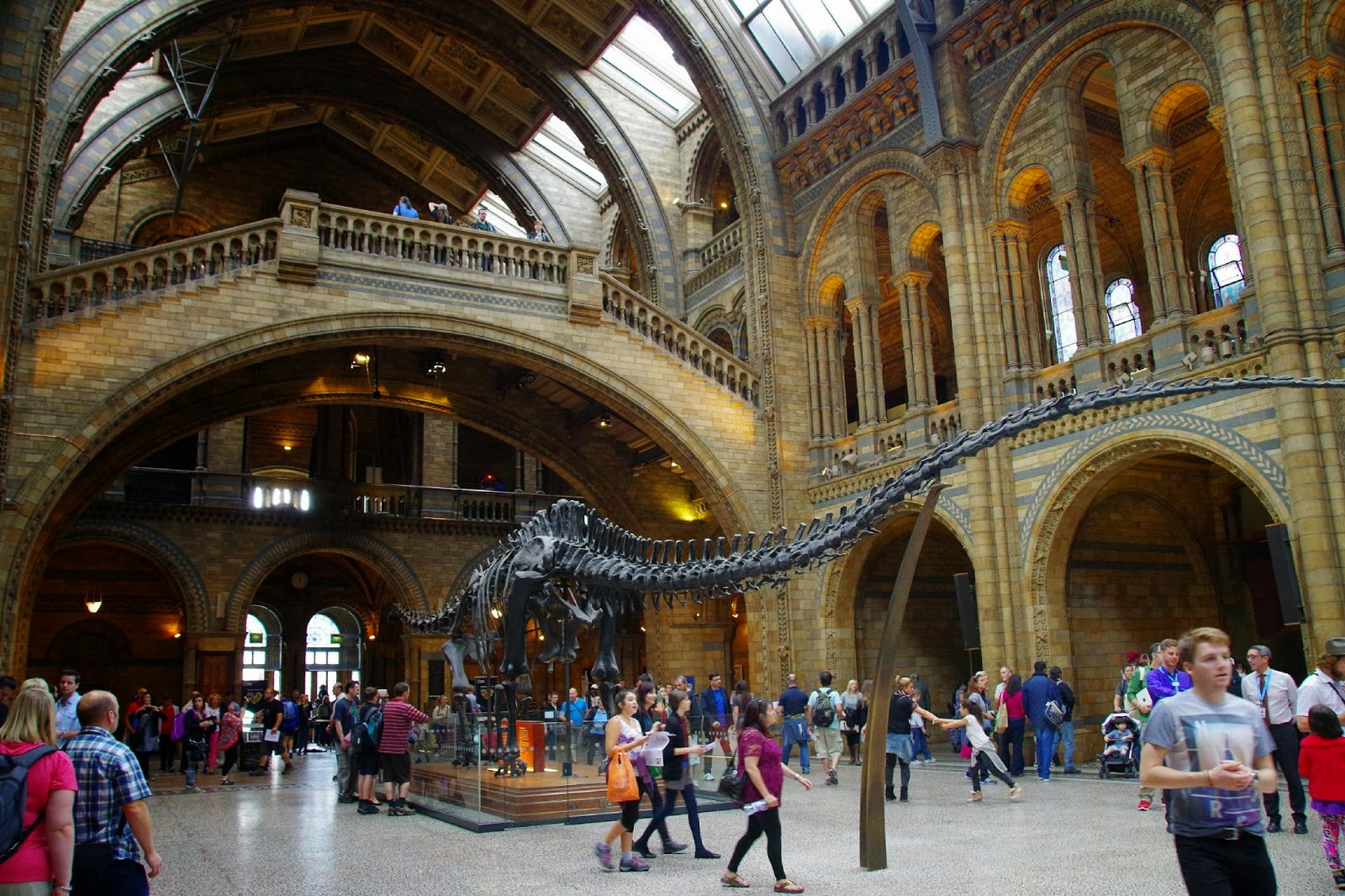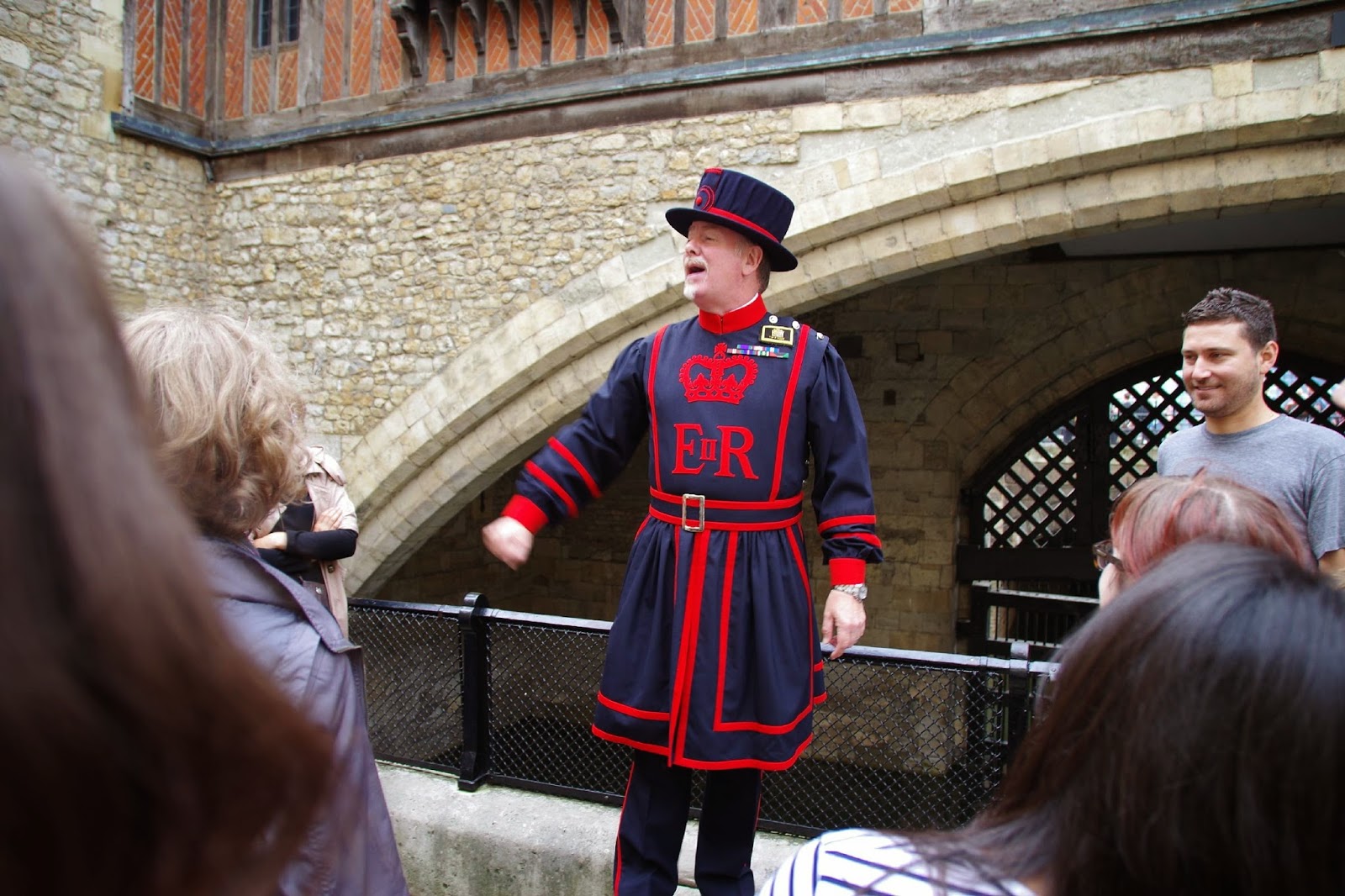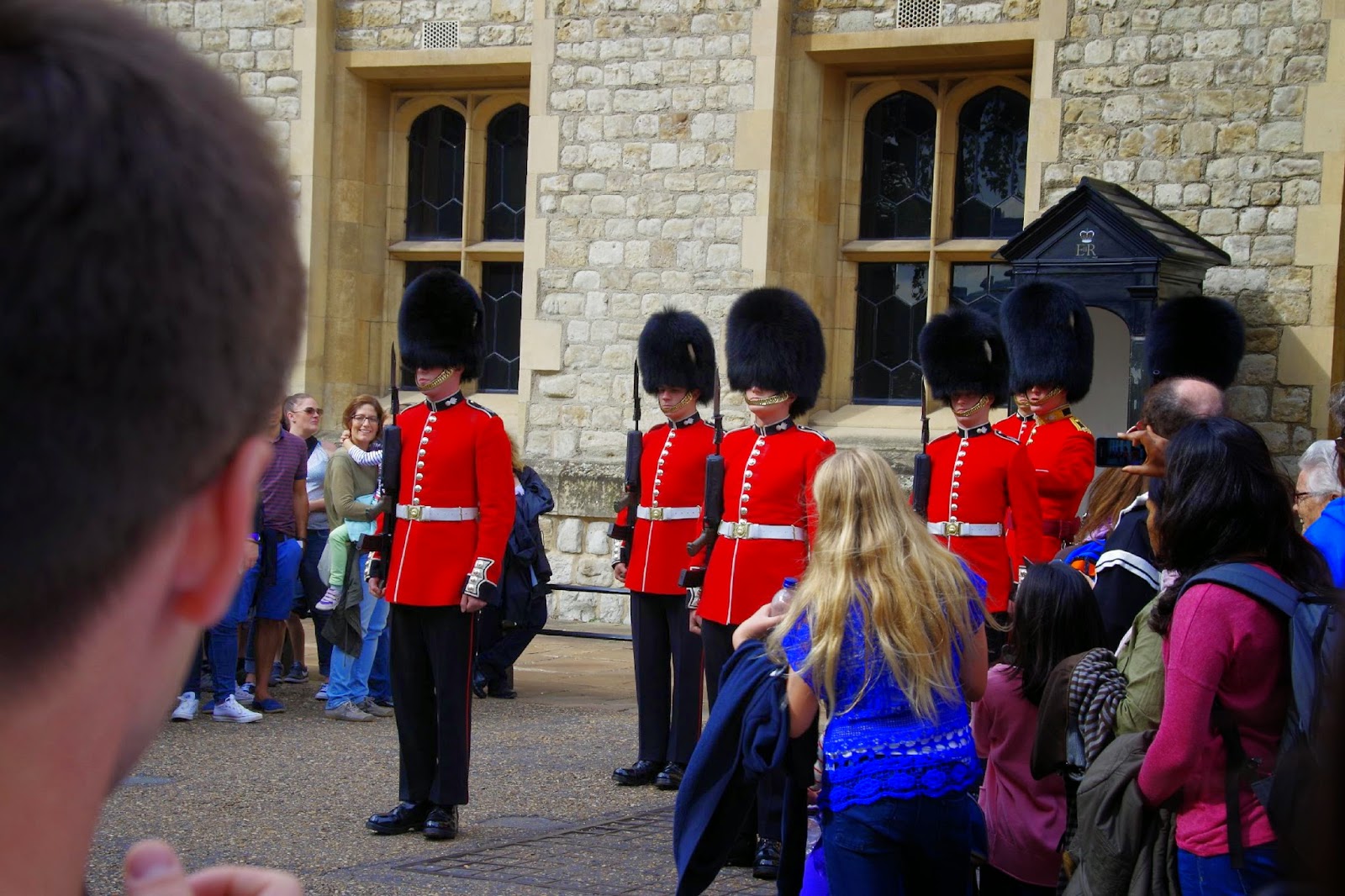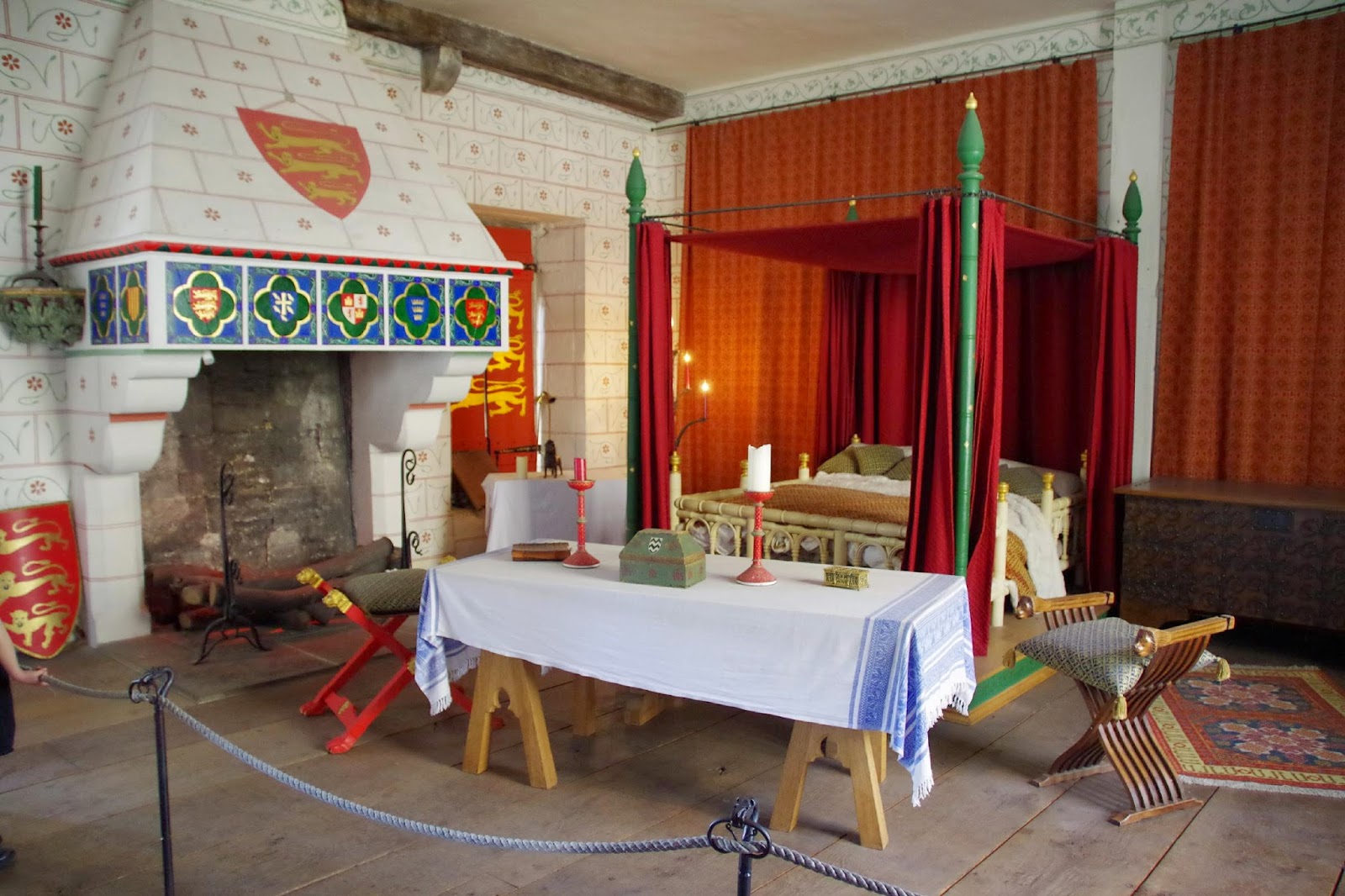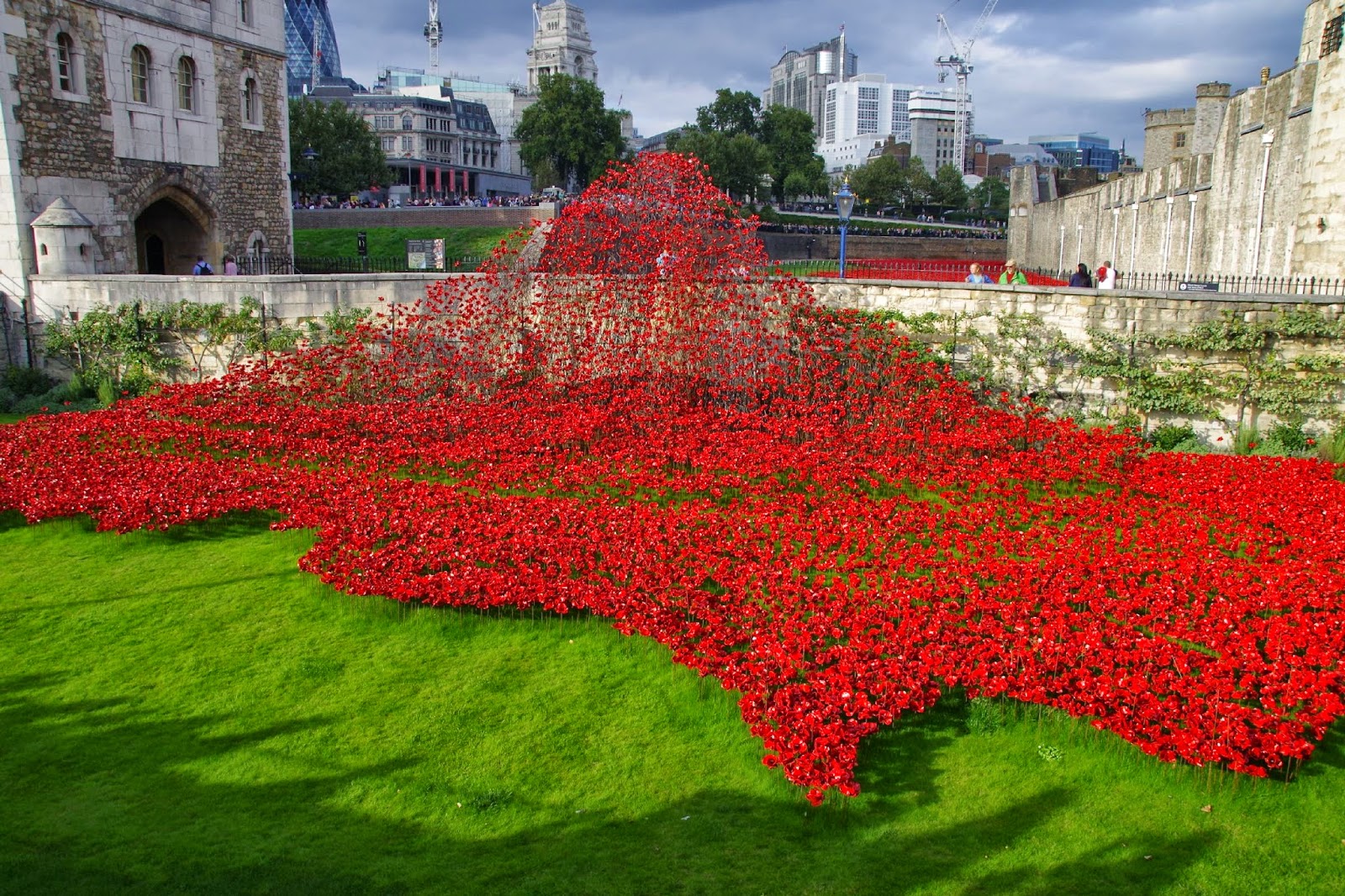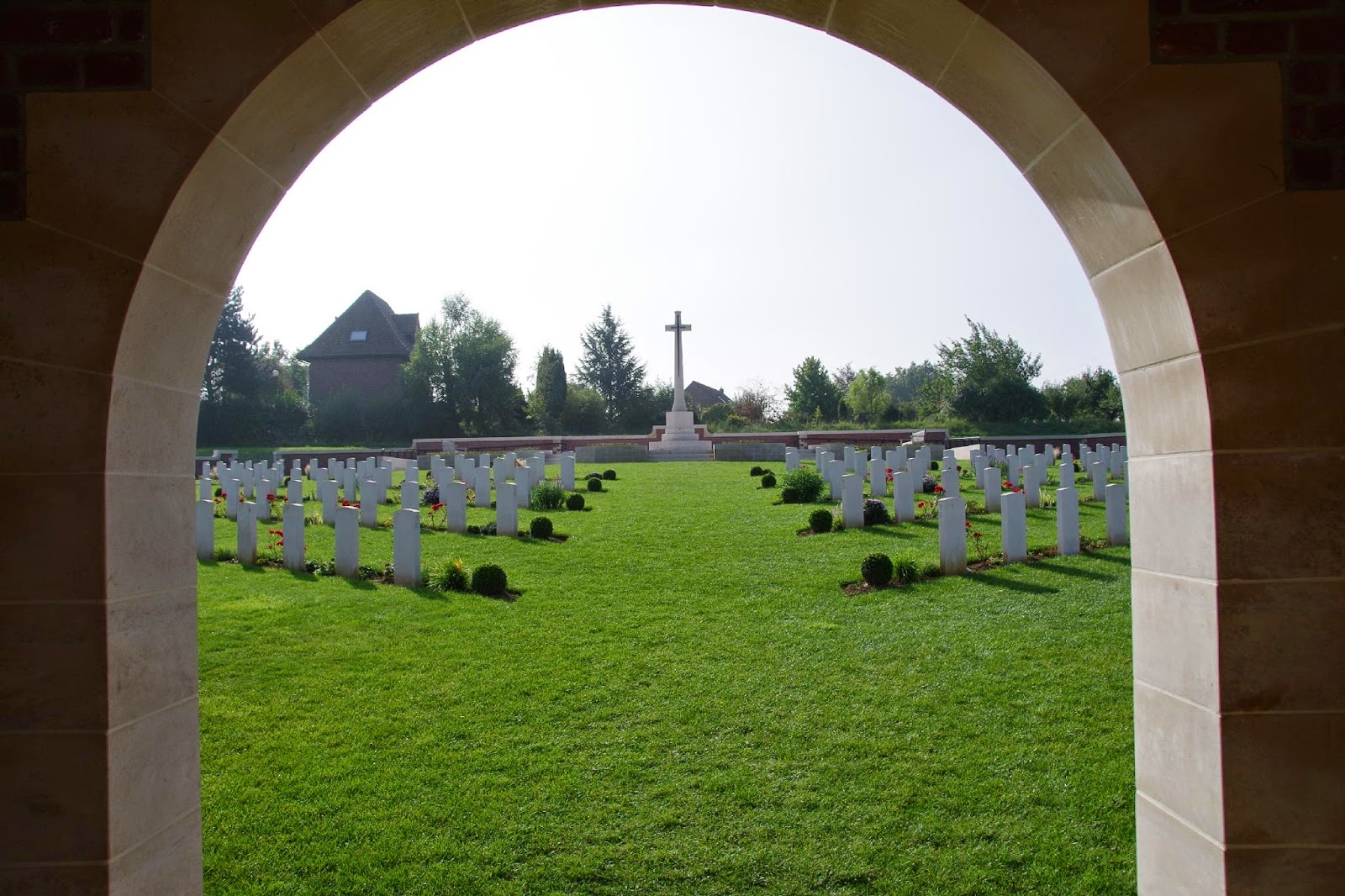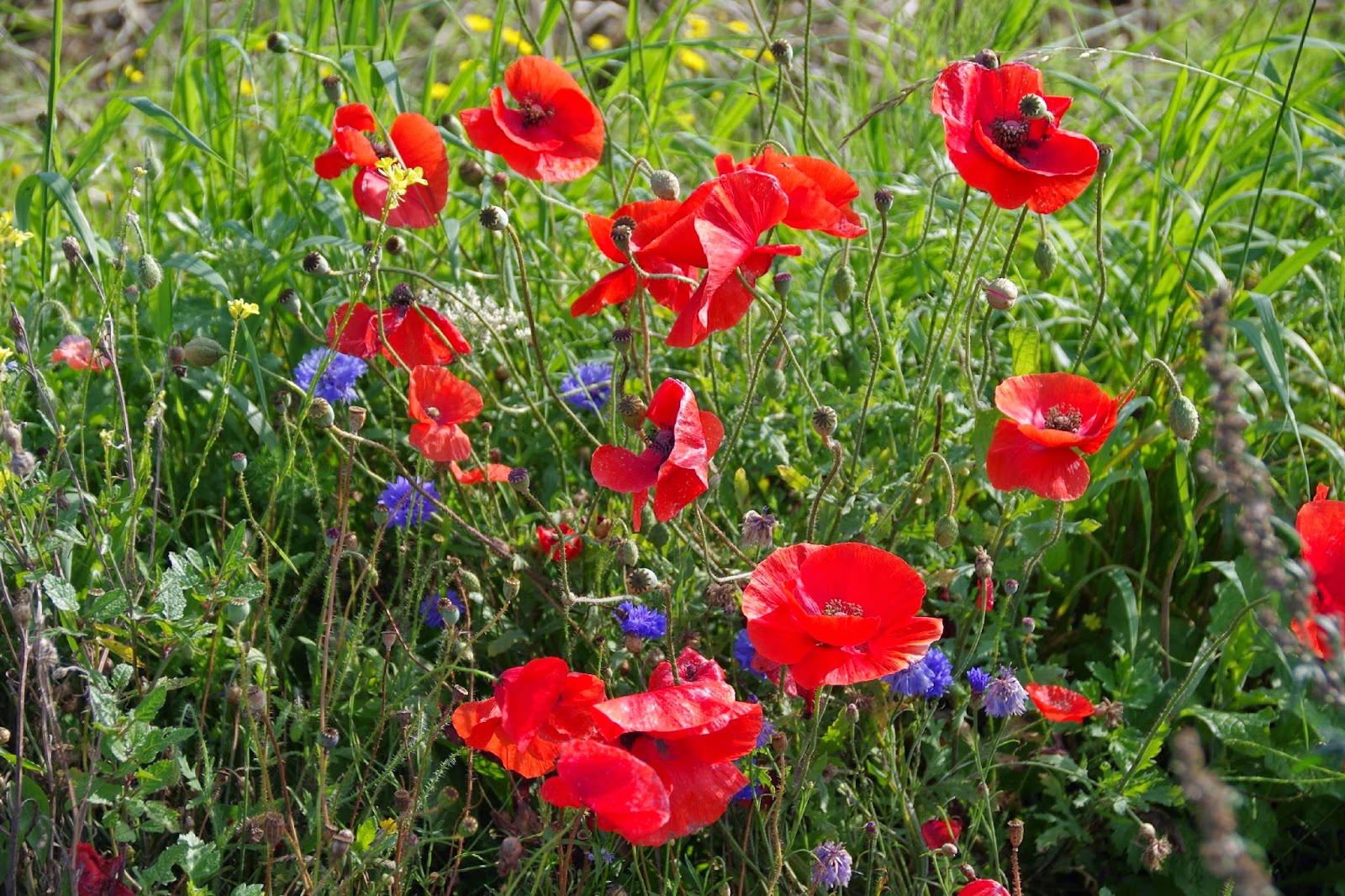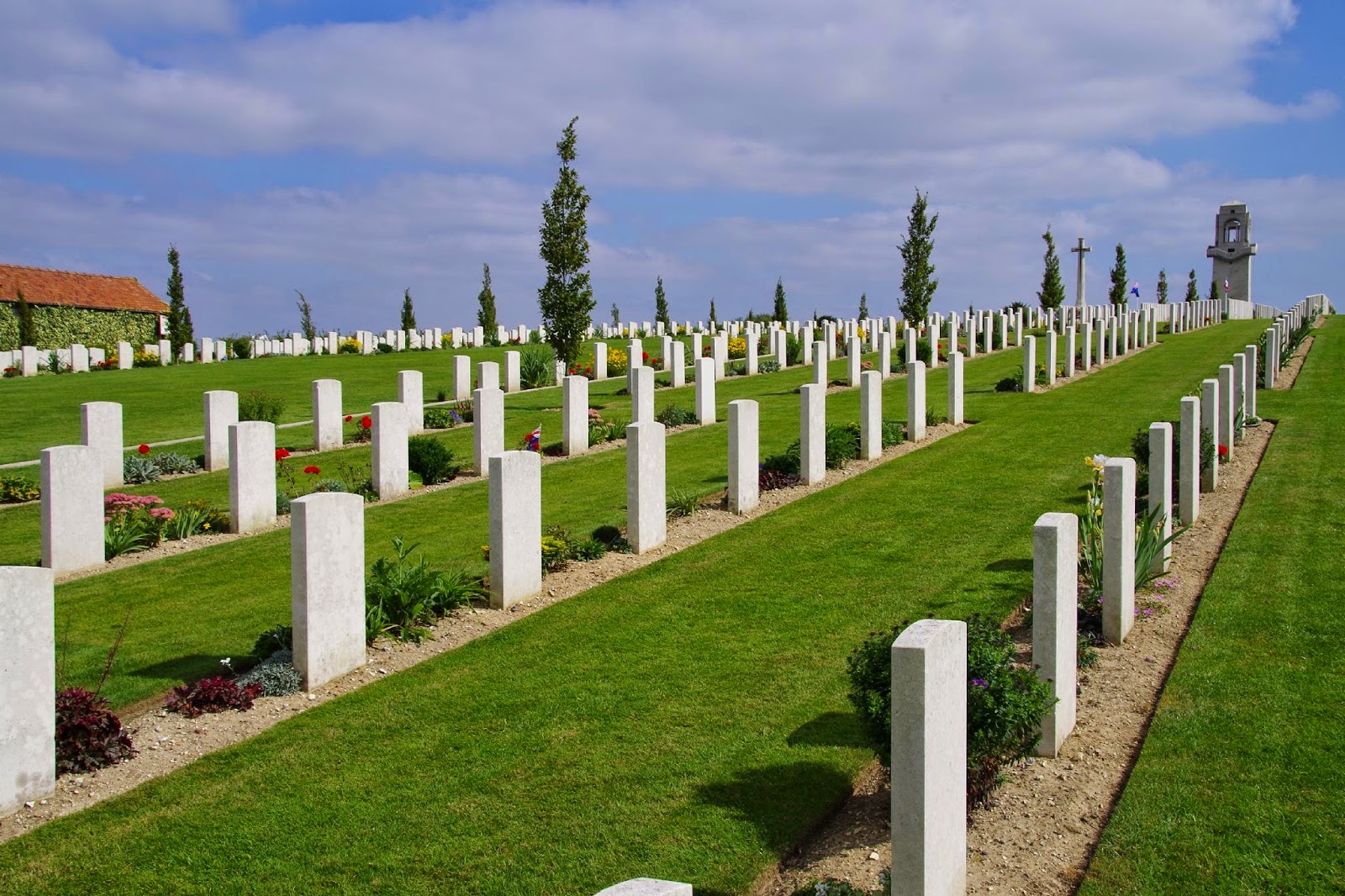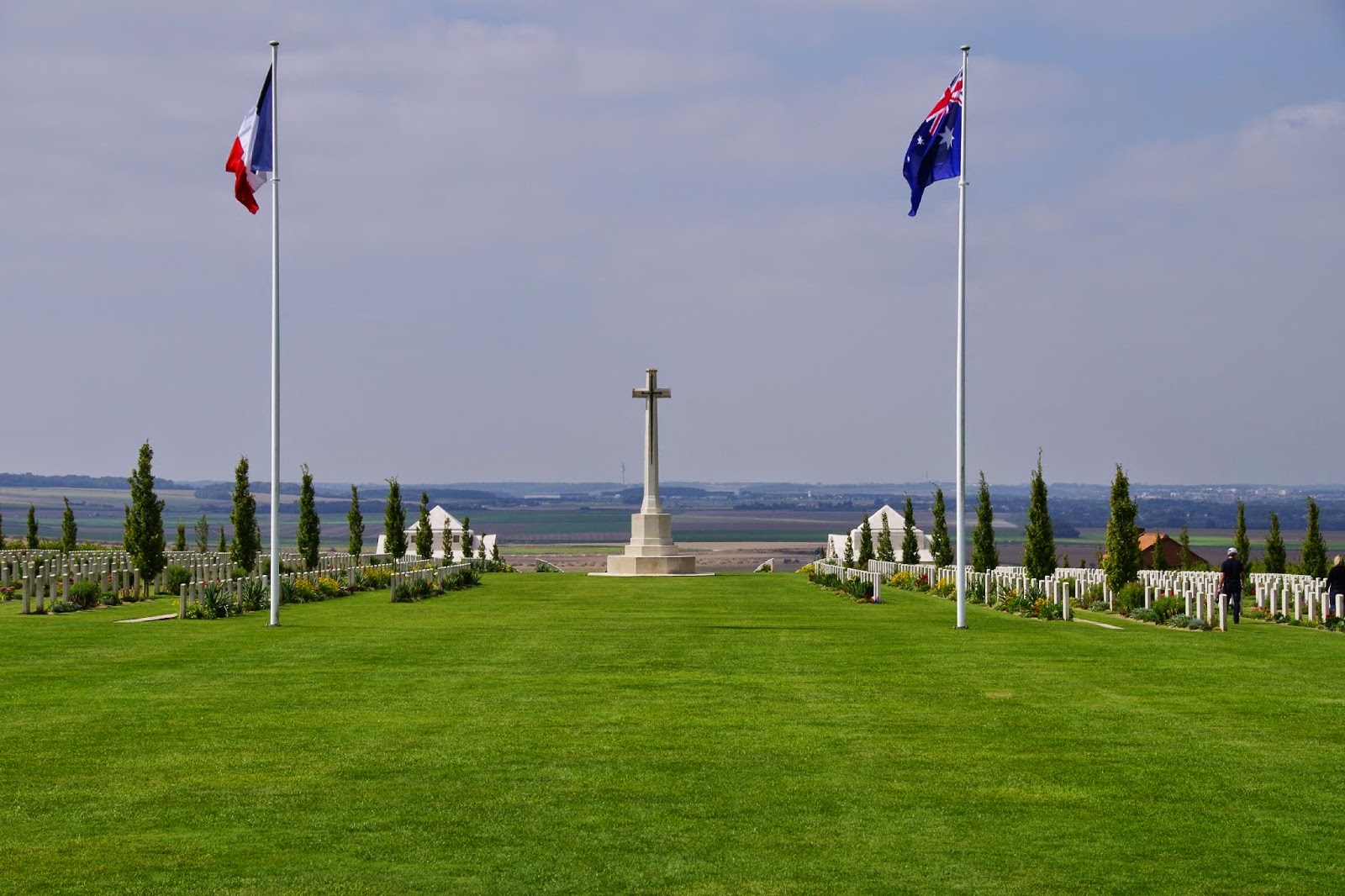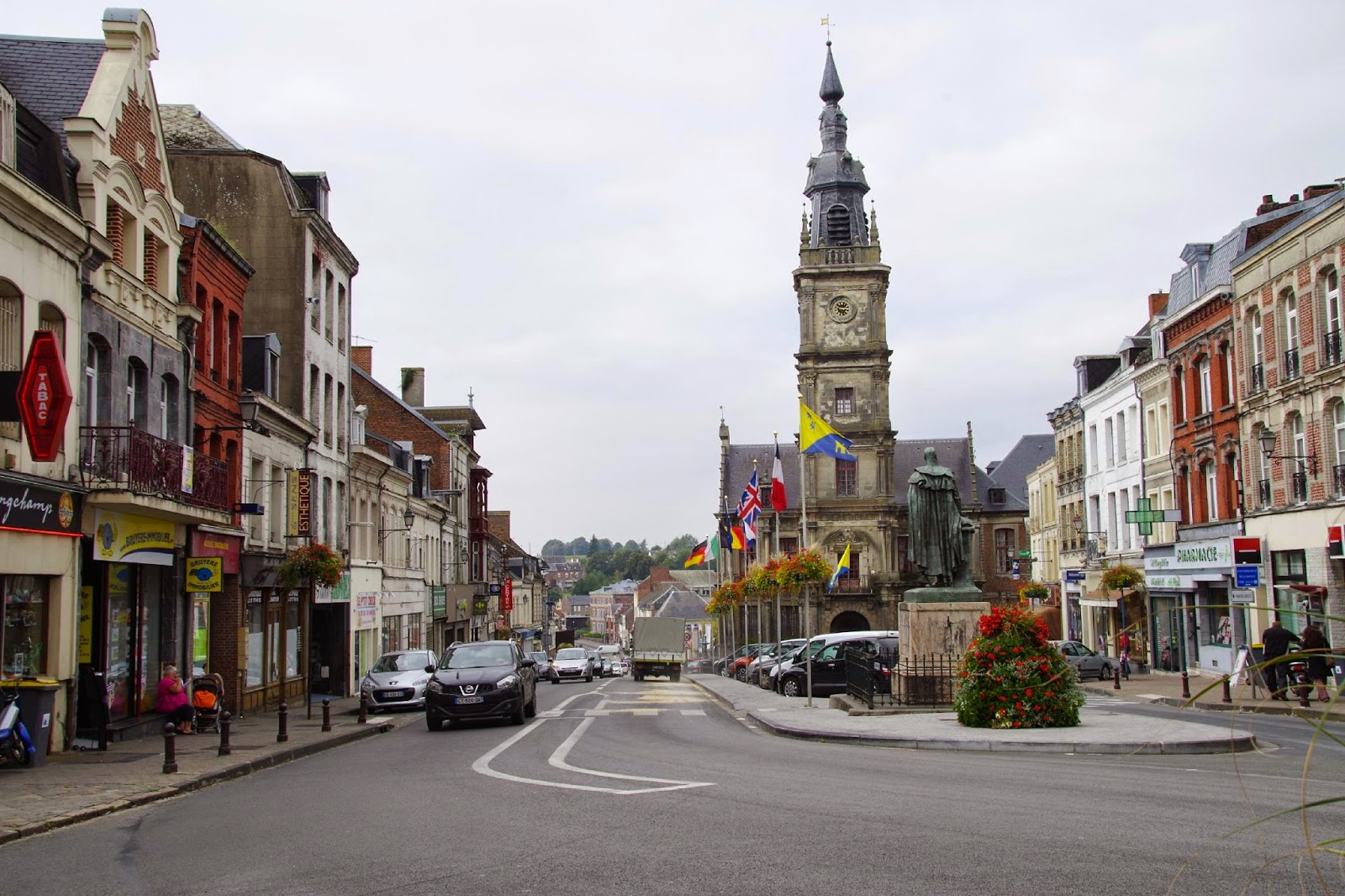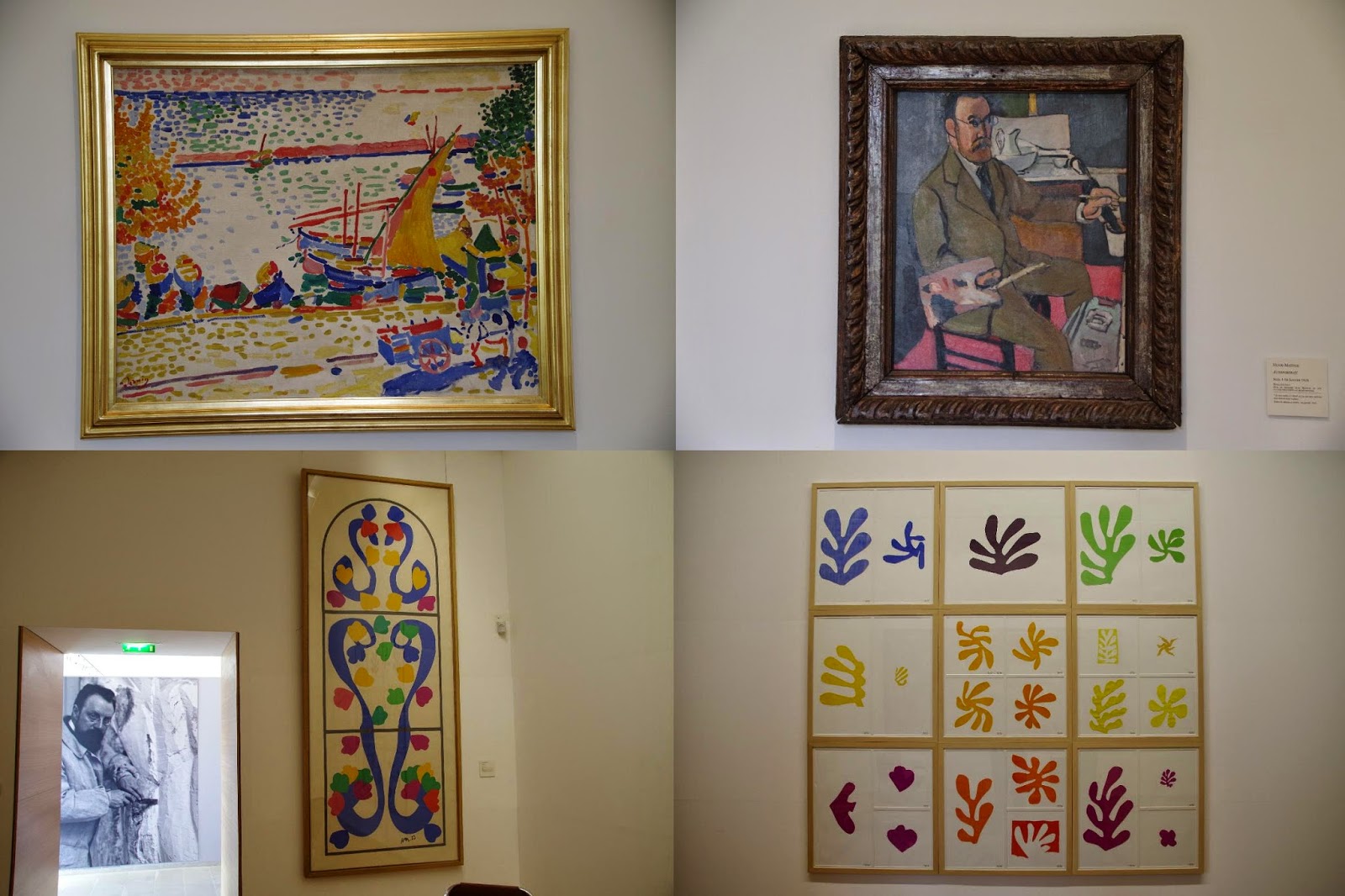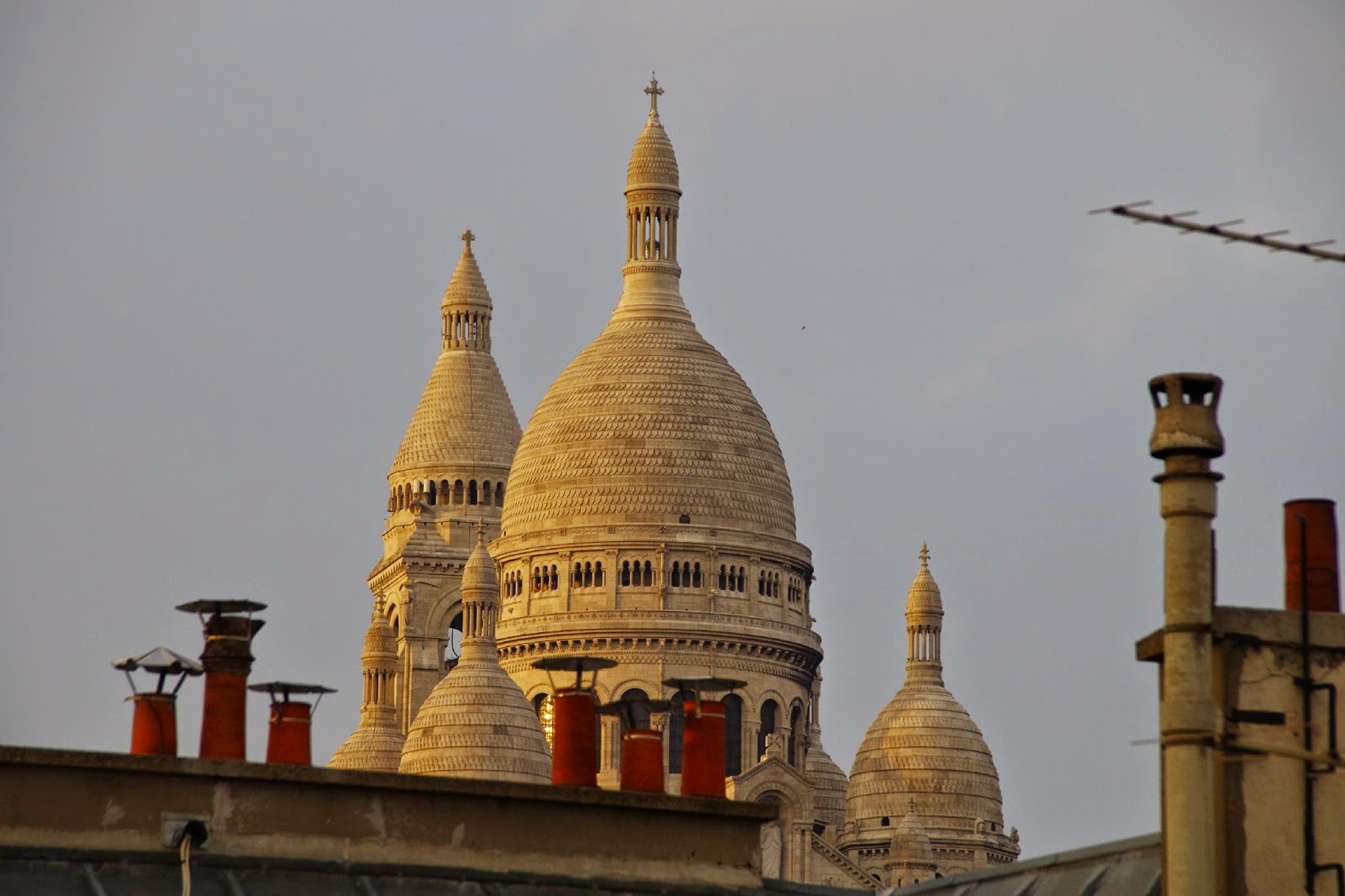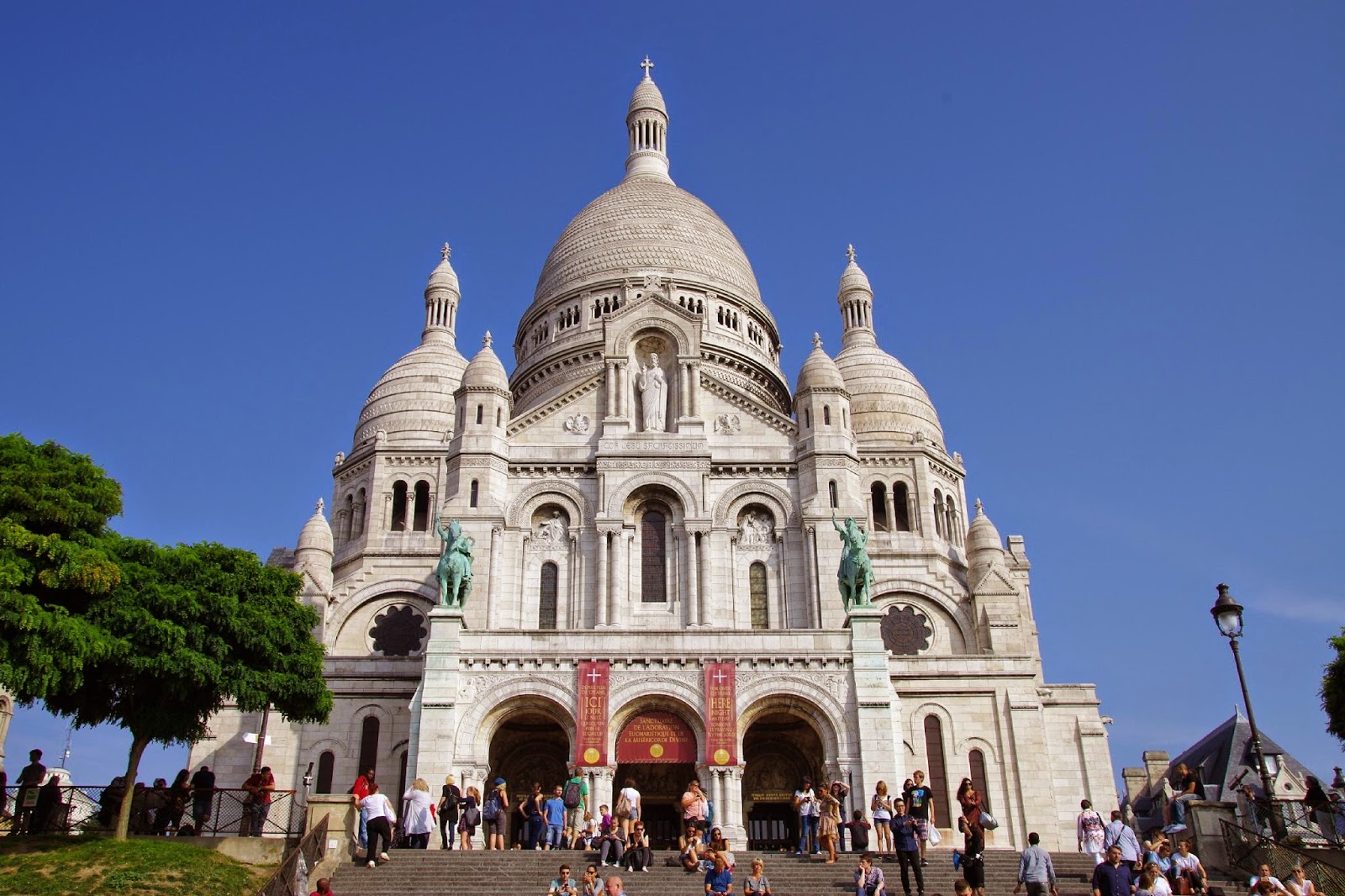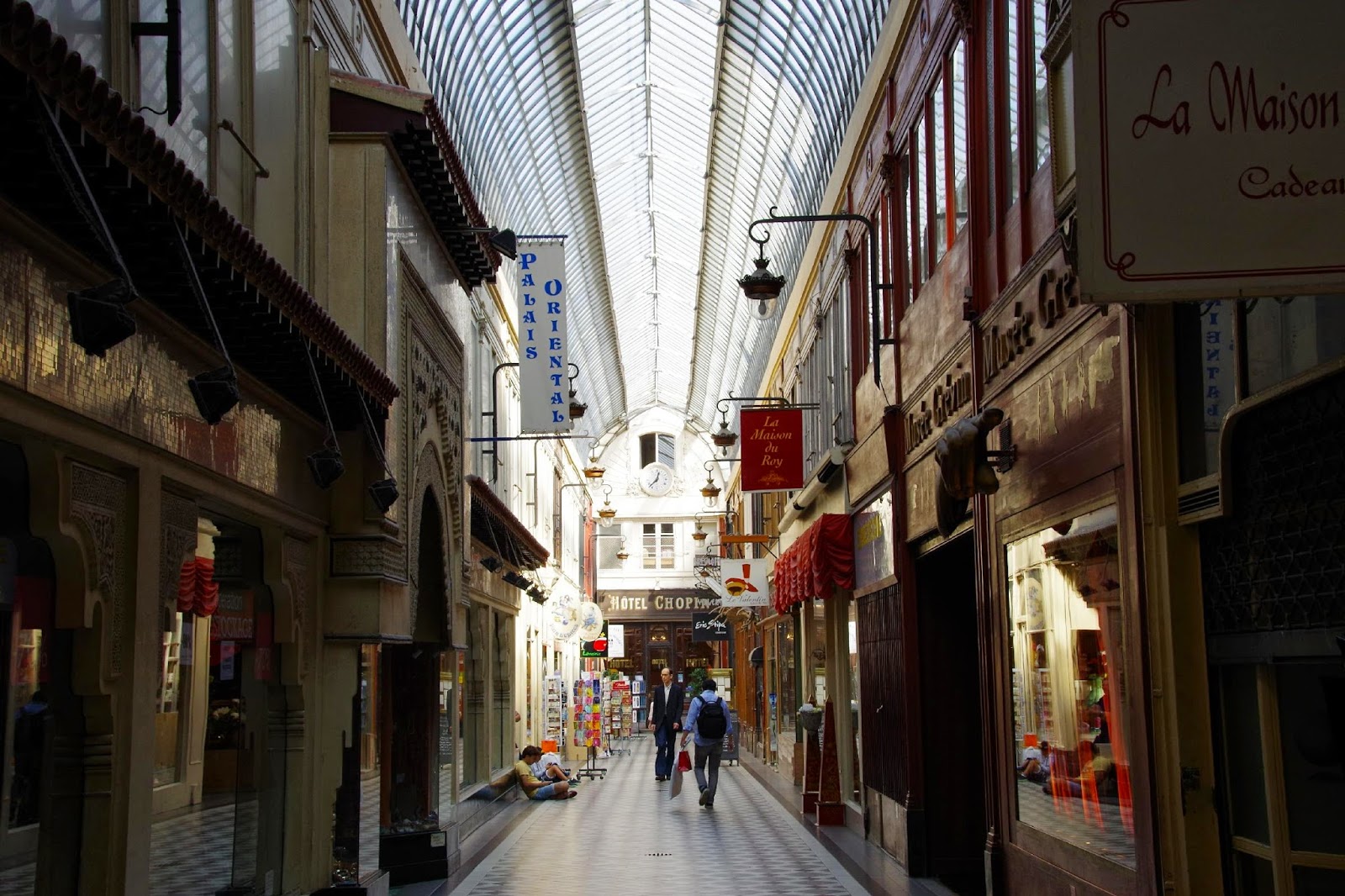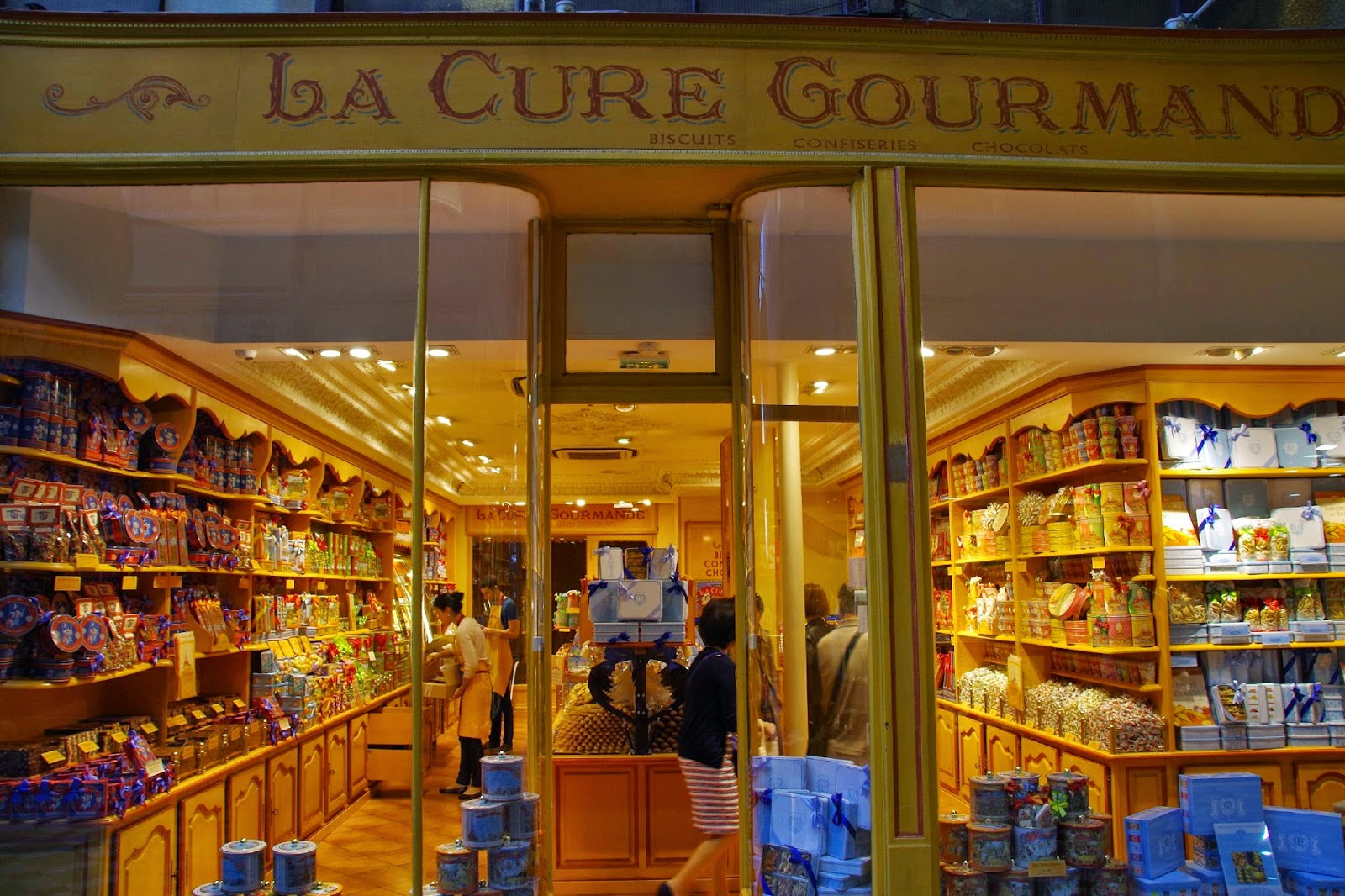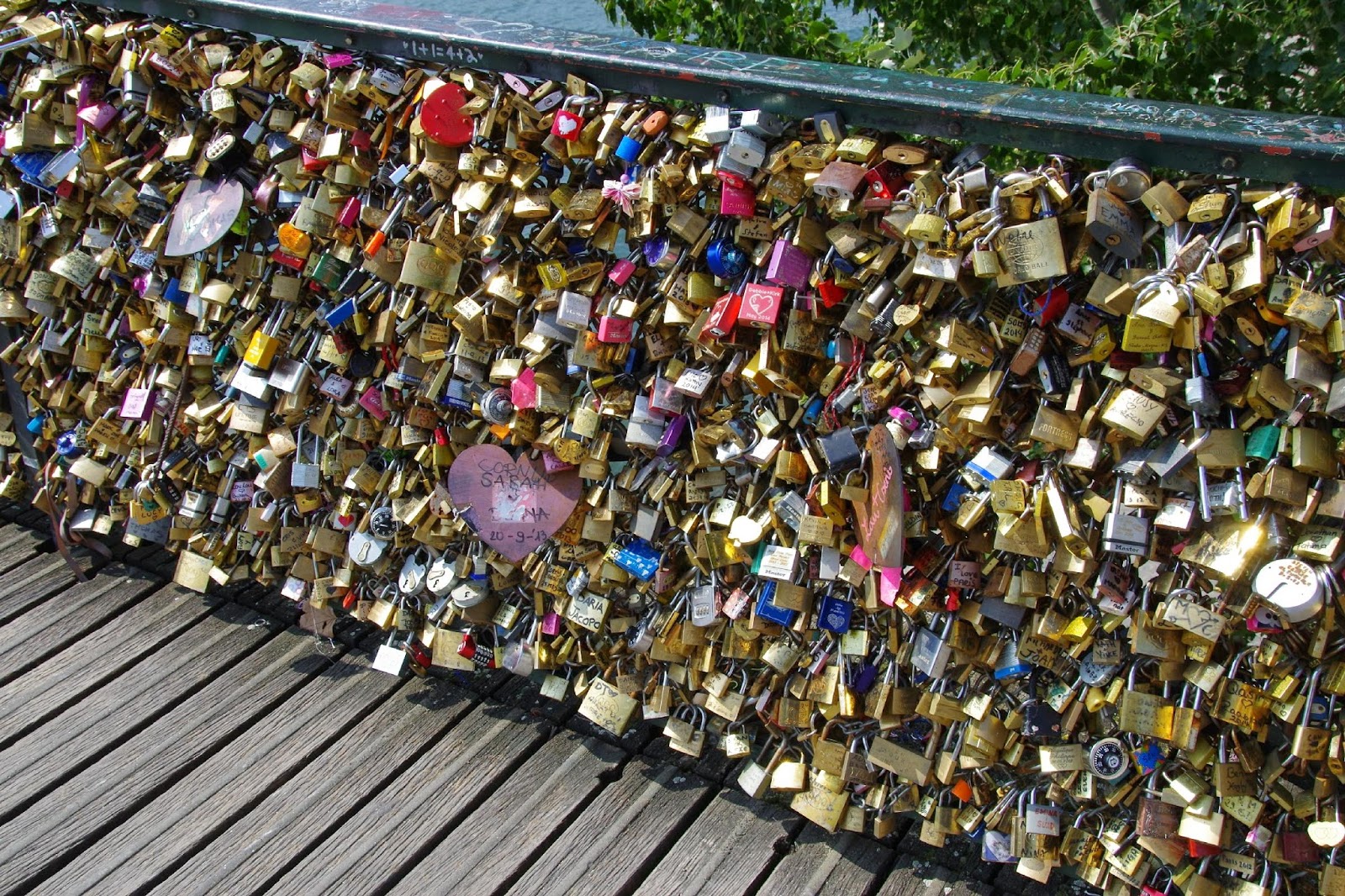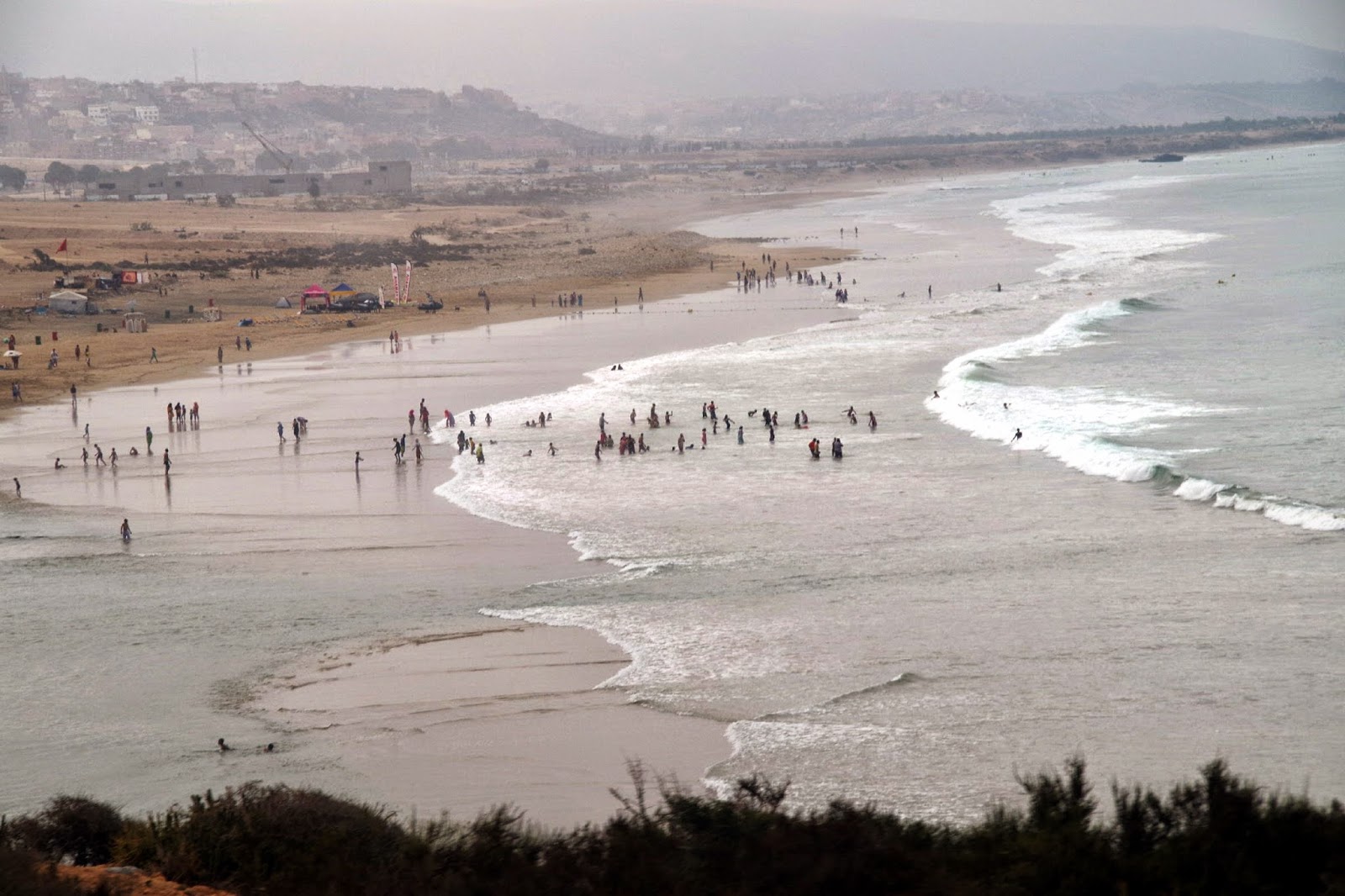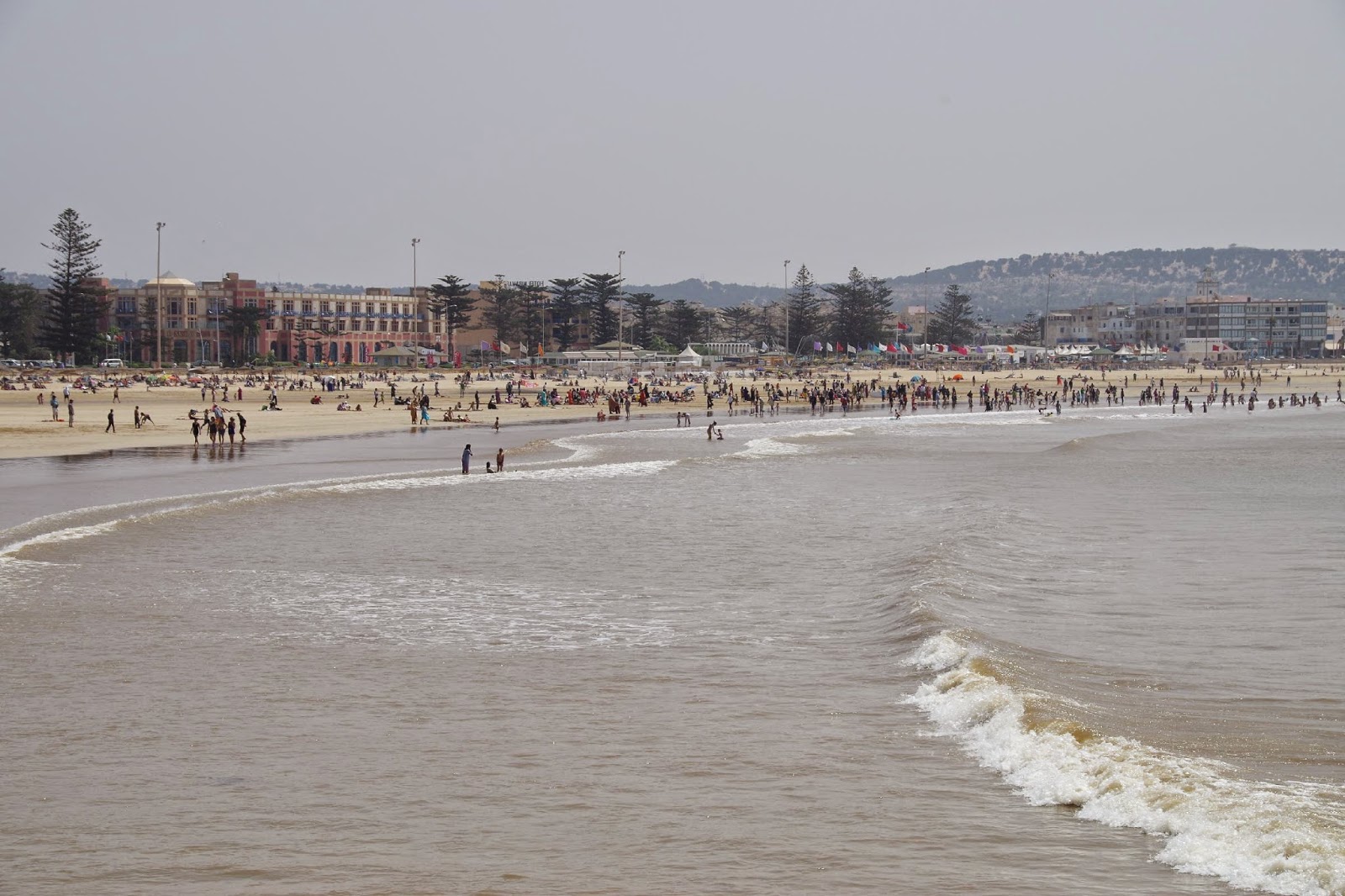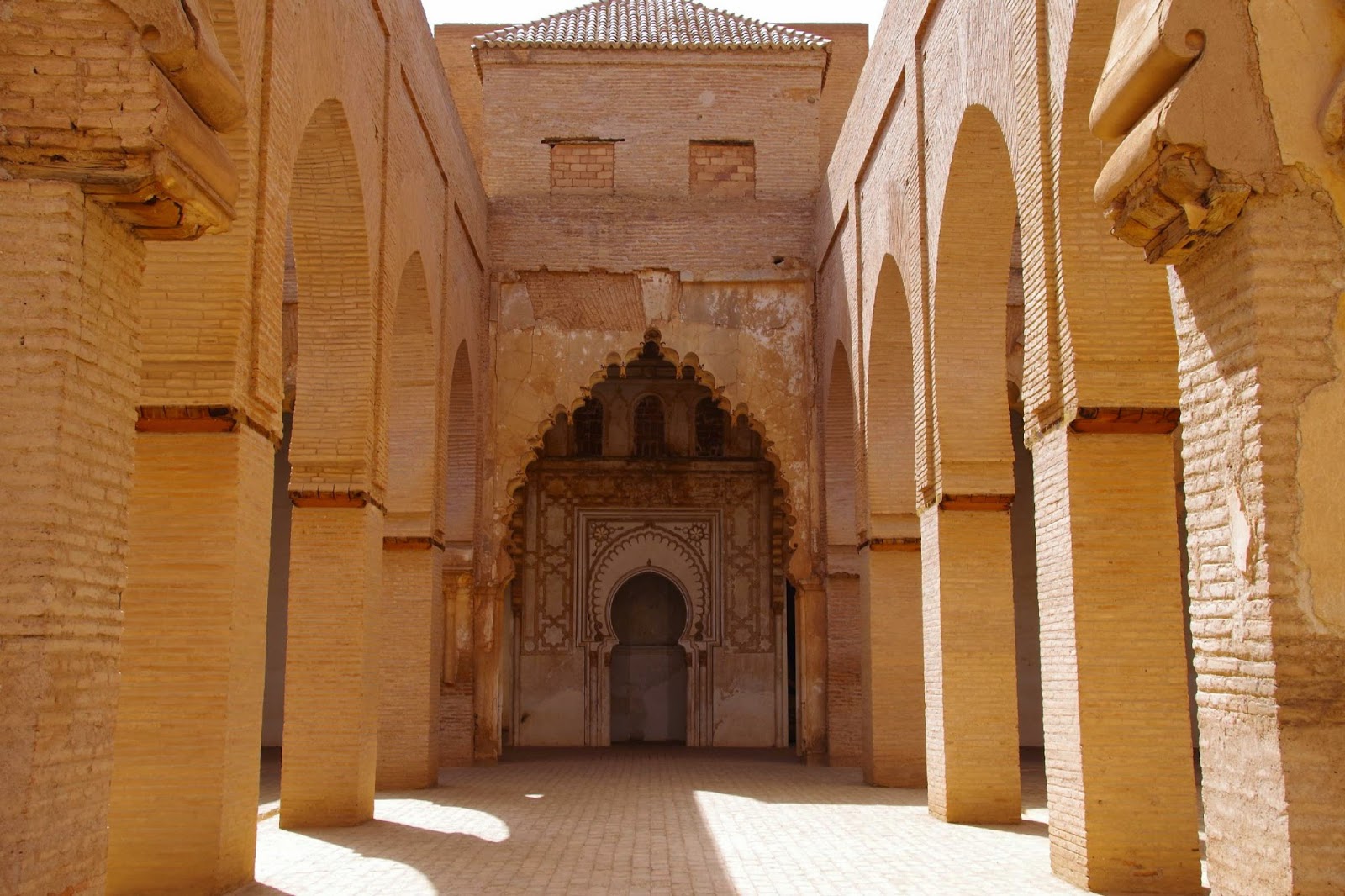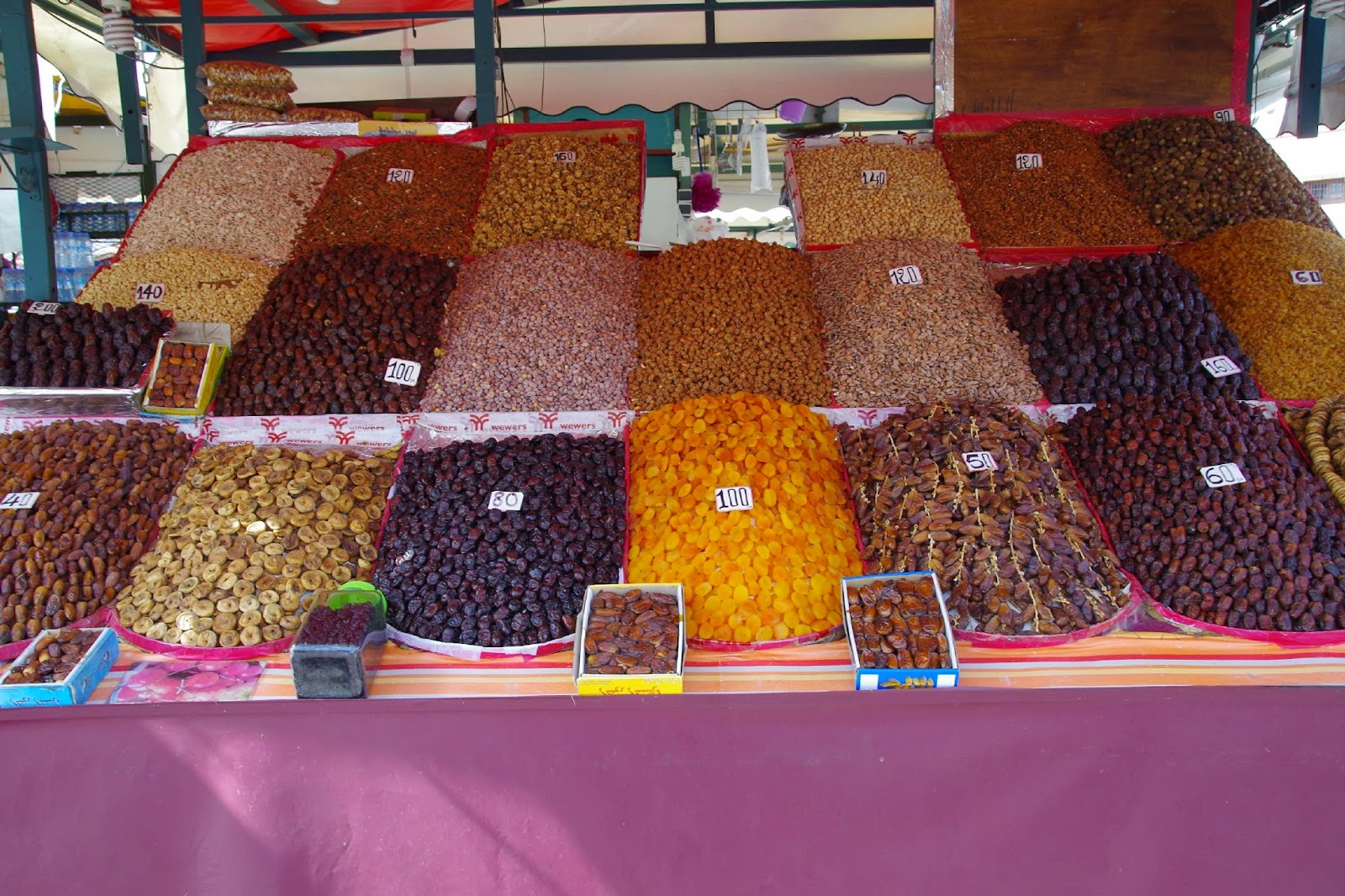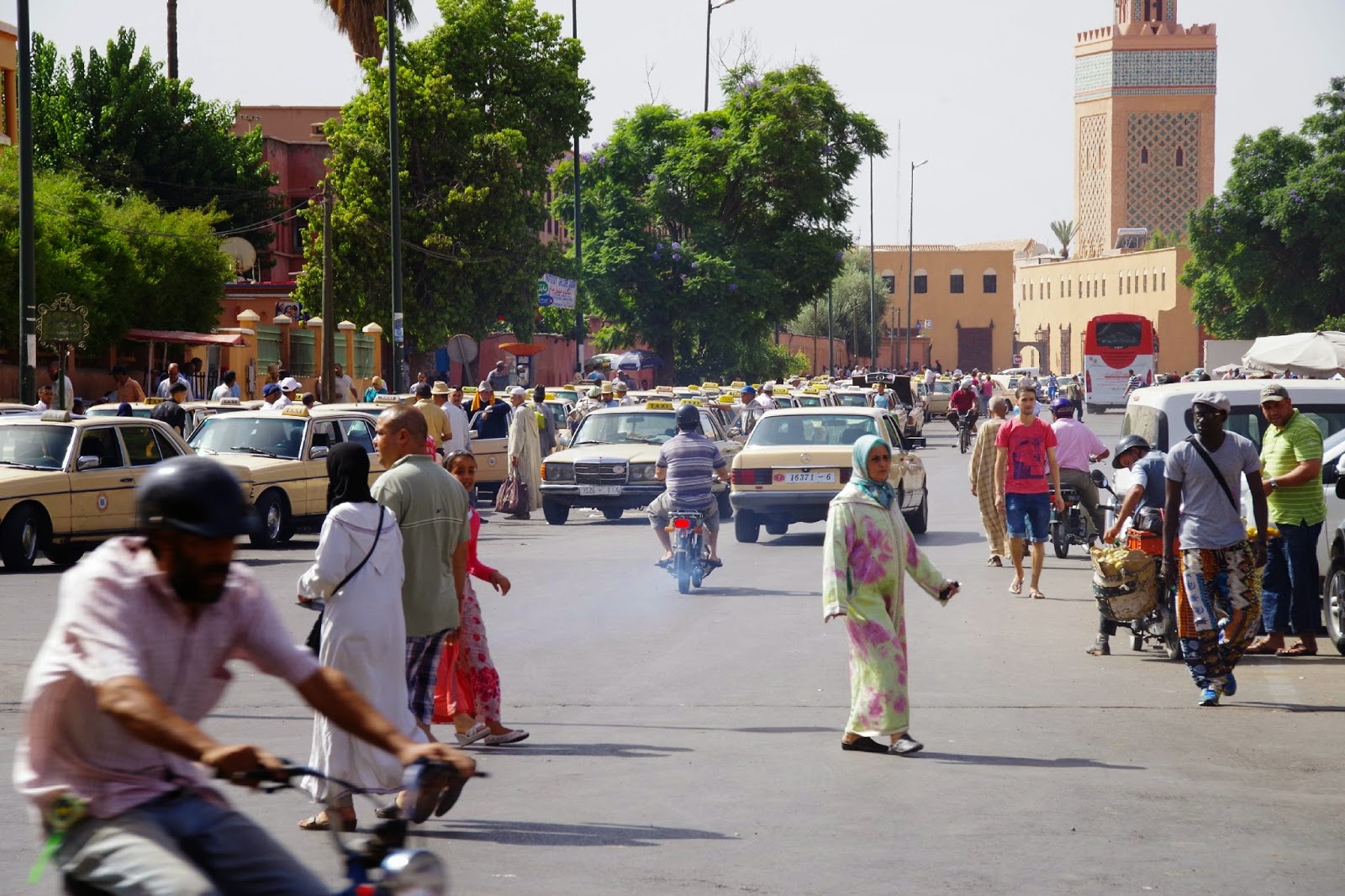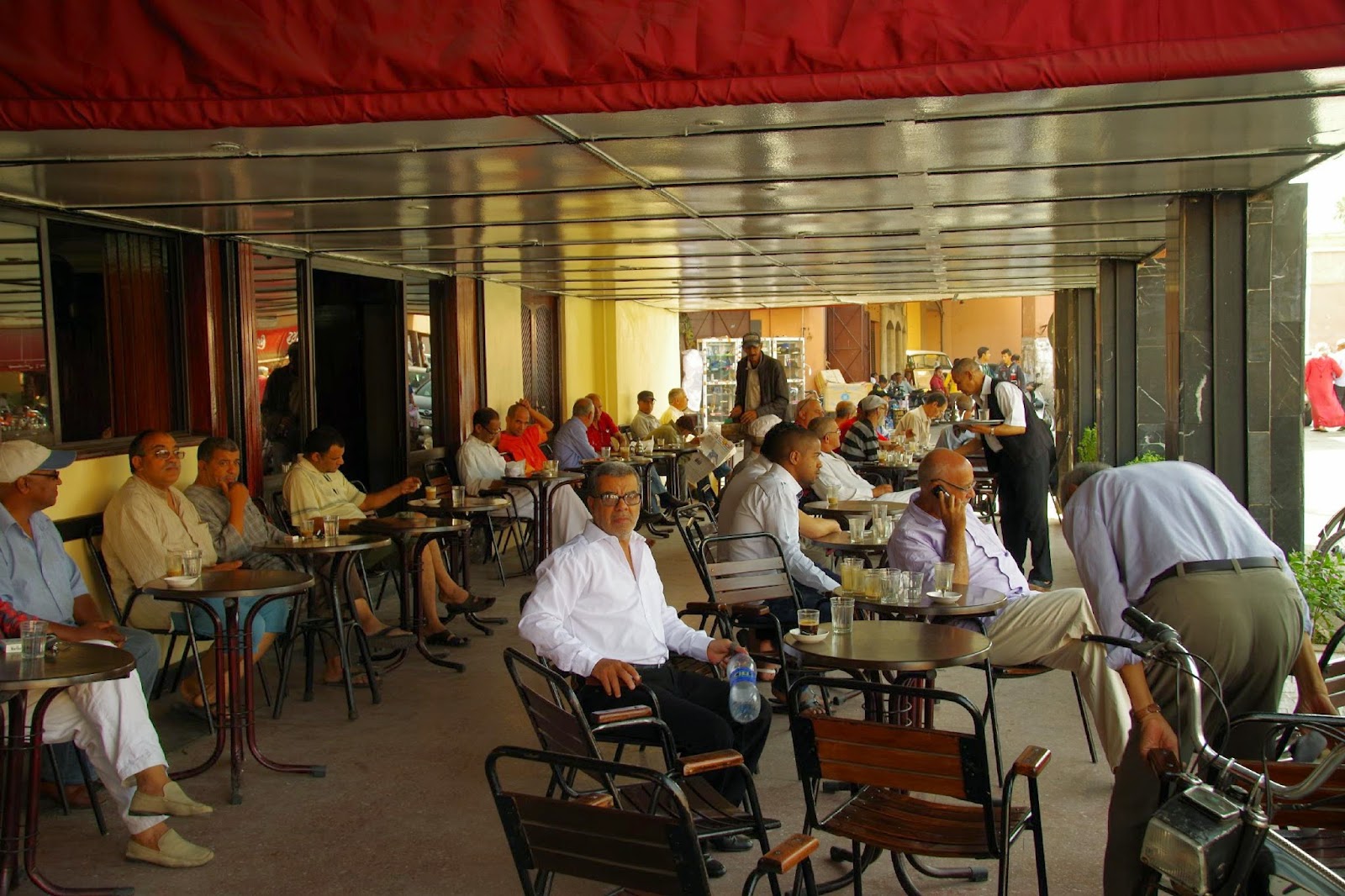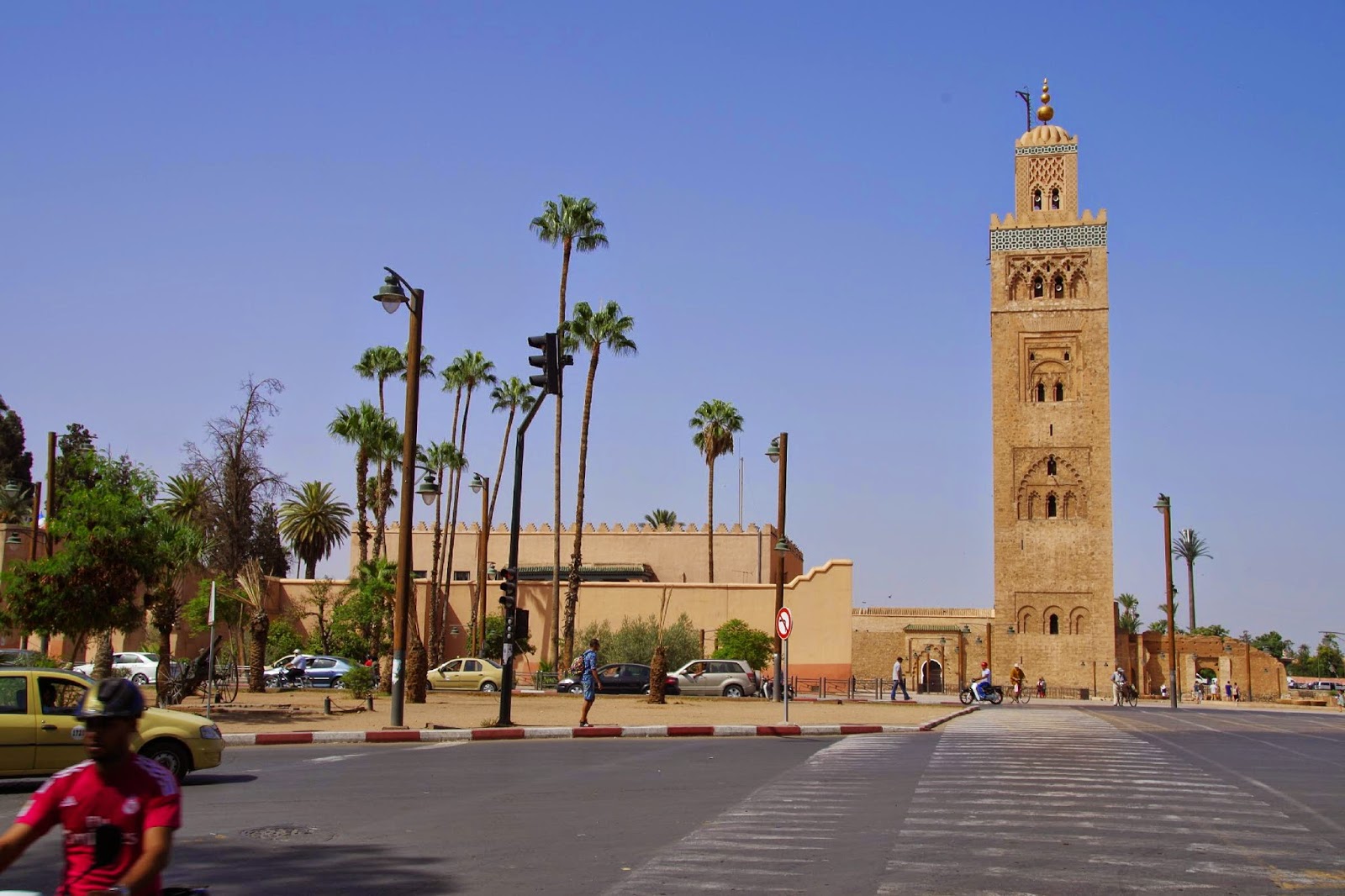After a 4am rise in order to catch a 6am flight to Marrakesh we're now in our Riad. We have a small room off a central courtyard in a building that could be any age, down a narrow alley off an almost as narrow street in the Medina (old city) area of Marrakesh. The taxi couldn't find the way so he stopped nearby and asked a friend with a large wheelbarrow to take us and our bags (only the bags on the wheelbarrow) the rest of the way. His friend then wanted to be paid half what we'd paid the taxi driver to bring us from the airport. But this is Morocco where every price is by negotiation.
We walked through the very colourful streets of the souk (market), avoiding motorbikes, delivery vans and even donkey carts, stopping to watch a young man turning wood by hand. After buying one of his trinkets he then
had to take us to his brother's Moroccan pharmacy - translate naturopathy shop - where we were given a "totally free" demonstration of the products he sells. That then turned into a shoulder massage, which turned out to cost 2 Euros and a long hard sell demonstration of the wonderful things we could use to make life more pleasant..
Several times we stopped to ask how much something would cost and the answer was either "How much would you like to pay?" or a price that was about double what we ended up paying. Even the price of a haircut (which I was in need of) had to be negotiated.
We stopped at a cafe thinking we'd get a cup of coffee and maybe a roll or a bun, but before we could order out came a tray filled with plates of lentils and olives and tomato salsa to be eaten with a bread roll. Once we'd eaten that another tray appeared with 2 plates of various meats, shish kabobs and shish tawouks and cooked vegetables.
In the end the bill came to around $18 for the two of us. So sometimes you don't need to negotiate the price is right to start with.
 |
| Hand wood turning using a bow one the shaft |
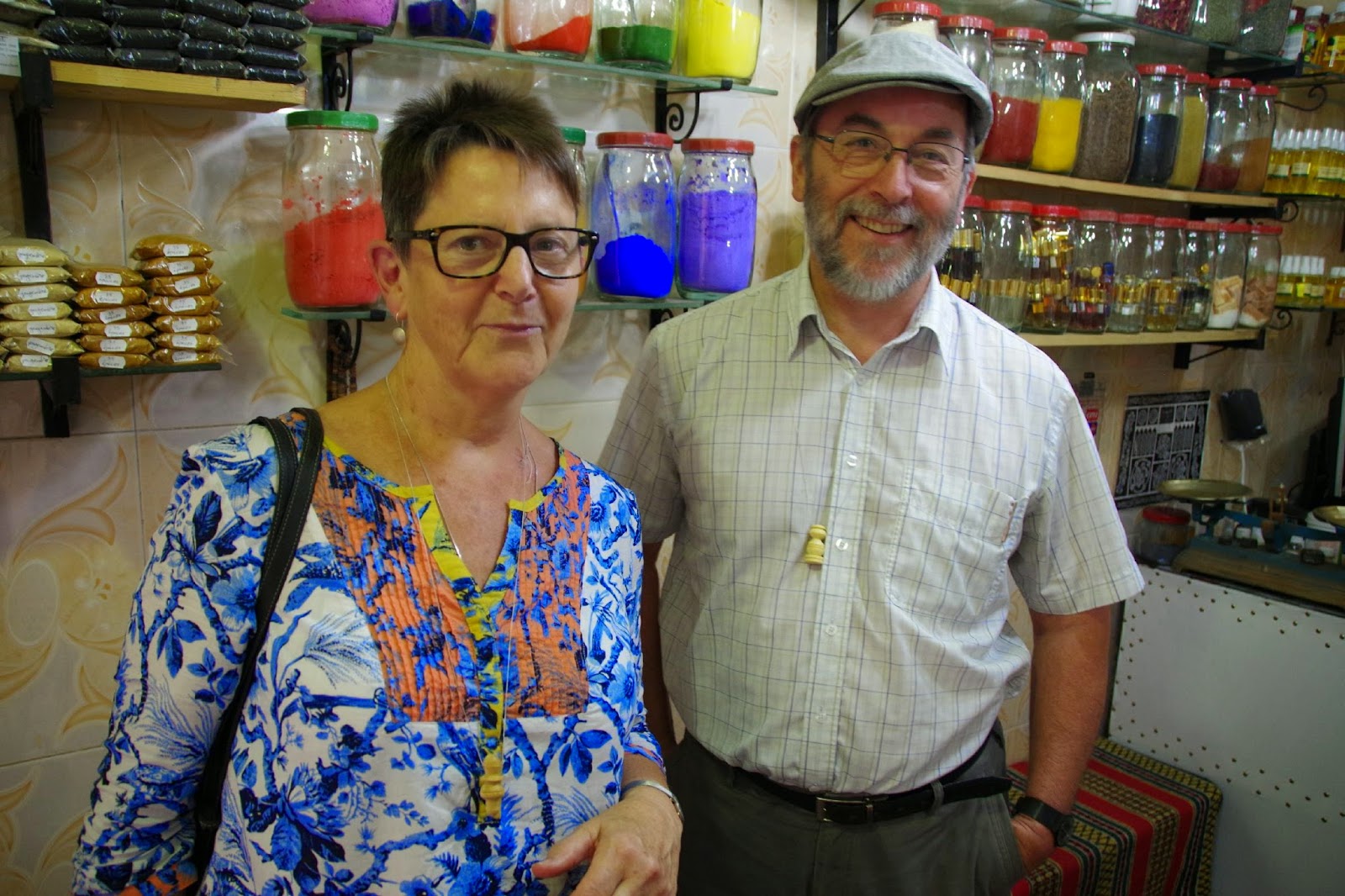 |
| Us in the Naturopaths shop |
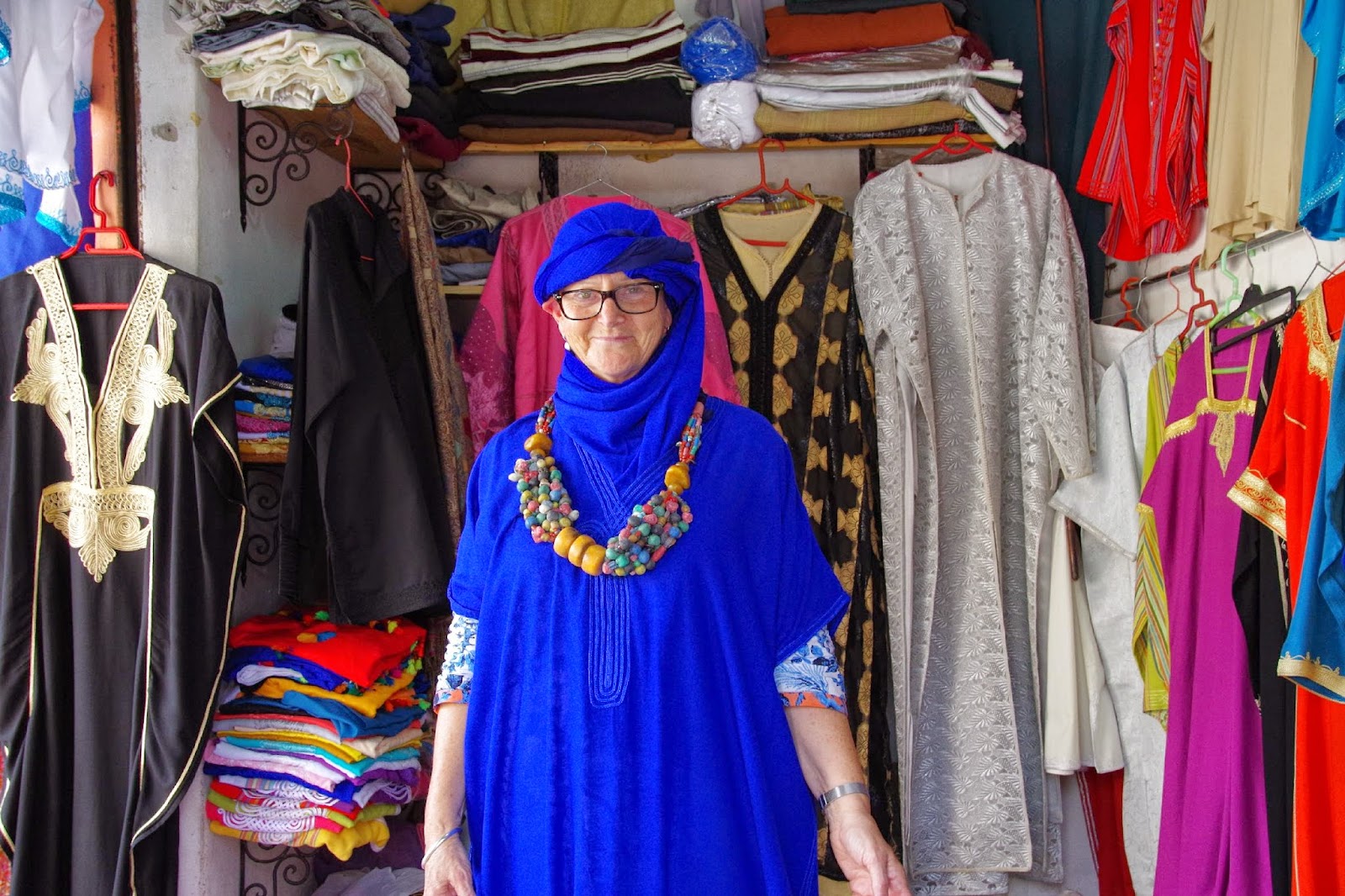 |
| Di deciding whether to go native |
 |
| Donkey cart (with loud braying noises not audible in the picture) |
 |
| Hand made leather shoes of every colour |

